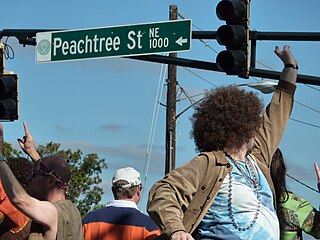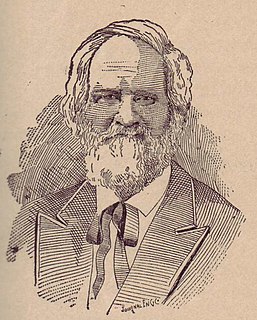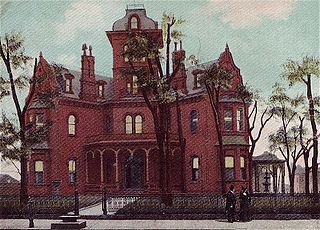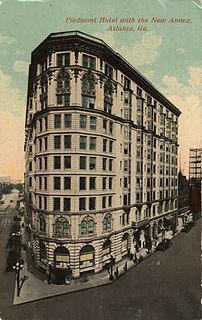
The history of Atlanta dates back to 1836, when Georgia decided to build a railroad to the U.S. Midwest and a location was chosen to be the line's terminus. The stake marking the founding of "Terminus" was driven into the ground in 1837. In 1839, homes and a store were built there and the settlement grew. Between 1845 and 1854, rail lines arrived from four different directions, and the rapidly growing town quickly became the rail hub for the entire Southern United States. During the American Civil War, Atlanta, as a distribution hub, became the target of a major Union campaign, and in 1864, Union William Sherman's troops set on fire and destroyed the city's assets and buildings, save churches and hospitals. After the war, the population grew rapidly, as did manufacturing, while the city retained its role as a rail hub. Coca-Cola was launched here in 1886 and grew into an Atlanta-based world empire. Electric streetcars arrived in 1889, and the city added new "streetcar suburbs".

Peachtree Street is one of several major streets running through the city of Atlanta. Beginning at Five Points in downtown Atlanta, it runs North through Midtown; a few blocks after entering into Buckhead, the name changes to Peachtree Road at Deering Road. Much of the city's historic and noteworthy architecture is located along the street, and it is often used for annual parades,, as well as one-time parades celebrating events such as the 100th anniversary of Coca-Cola in 1986 and the Atlanta Braves' 1995 World Series victory.

The Technique, also known as the "'Nique", is the official student newspaper of the Georgia Institute of Technology in Atlanta, Georgia, and has referred to itself as "the South's liveliest college newspaper" since 1945. As of the fall semester of 2011, the Technique has a weekly circulation of 10,000, distributed to numerous locations on the Georgia Tech campus and a handful of locations in the surrounding area. The first issue of the Technique was published on November 17, 1911, and the paper has printed continuously since its founding. The paper publishes weekly throughout the regular school year and primarily covers news, events and issues specific to the Georgia Tech community. In 2004 it was one of 25 collegiate newspapers to receive the Pacemaker award from the Associated Collegiate Press.

The Atlanta History Center (AHC) is a history museum and research center located in the Buckhead district of Atlanta, Georgia. The Museum was founded in 1926, and currently consists of six permanent, and several temporary, exhibitions. The AHC campus is 33-acres and features historic gardens and houses located on the grounds, including Swan House, Tullie Smith Farm, and Wood Family Cabin. The AHC's research arm, the Kenan Research Center, includes 3.5 million resources and a reproduction of historian Franklin Garrett's (1906–2000) office. The AHC holds one of the largest collections of Civil War artifacts in the United States.

Jonathan Norcross, was elected in 1850 as the fourth Mayor of Atlanta, Georgia, serving the customary term at the time of one year. Dubbed the "Father of Atlanta" and "hard fighter of everything" by publisher Henry W. Grady, he followed three mayors elected from the Free and Rowdy Party.

John H. James was an American banker, politician, and businessman who served as the 21st Mayor of Atlanta, Georgia, in 1871.
William E. Ezzard was a Southern United States politician who served as the 11th, 13th and 19th Mayor of Atlanta, Georgia, in the 19th century.
Franklin Miller Garrett was the only official historian of Atlanta. His massive Atlanta and Environs: A Chronicle of its People and Events is a book about the city's history.
Oswald Houston was a merchant as well as the first treasurer of the city of Atlanta, Georgia, USA, serving the city from just after its inception in 1847 to the mid-1850s when he was disabled by a stroke.

The Great Atlanta Fire of 1917 began just after noon on 21 May 1917 in the Old Fourth Ward of Atlanta, Georgia. It is unclear just how the fire started, but it was fueled by hot temperatures and strong winds which propelled the fire. The fire, which burned for nearly 10 hours, destroyed 300 acres (120 ha) and 1,900 structures displacing over 10,000 people. Damages were estimated at $5 million,.

The Atlanta Georgian was an American daily afternoon newspaper in Atlanta, Georgia, United States.
The Viaducts of Atlanta were mainly created in the 1920s to bridge numerous level crossings of roads and railroads.

The Piedmont Hotel was a hotel which took up the block between Peachtree, Luckie, Forsyth and Broad streets in Atlanta, Georgia. The hotel opened with a gala celebration on January 15, 1903. It was built on the site of the homesteads of Atlanta pioneers William Ezzard and Dr. James F. Alexander]. It was Atlanta's first "New York" or Northern-style hotel. It entertained Presidents Theodore Roosevelt and Woodrow Wilson, and Presidential candidate William Jennings Bryan. It was the favorite hotel of visiting opera stars until the opening of the Georgian Terrace in Midtown.
Washington Hall was a historic hotel in antebellum Atlanta, Georgia. Built in 1846, the building was one of the earliest hotels built in the city. The hotel, along with many other structures in the city, was destroyed in 1864 during the Battle of Atlanta.
The following is a timeline of the history of the city of Atlanta, Georgia, United States.

The Lutheran Church of the Redeemer is a Lutheran church in midtown Atlanta, Georgia. The congregation was founded in the city in 1903, with the current building constructed in 1952.

All Saints' Episcopal Church is an Episcopal church in Atlanta, Georgia. The church was founded in 1903, with the current building constructed in 1906.

St. Luke's Episcopal Church is an Episcopal church in Atlanta, Georgia. The parish was founded in 1864, with the current building on Peachtree Street constructed in 1906.
The Atlanta streetcar strike of 1916 was a labor strike involving streetcar operators for the Georgia Railway and Power Company in Atlanta, Georgia. Precipitated by previous strike action by linemen of Georgia Railway earlier that year, the strike began on September 30 and ended January 5 of the following year. The main goals of the strike included increased pay, shorter working hours, and union recognition. The strike ended with the operators receiving a wage increase, and subsequent strike action the following year lead to union recognition.











